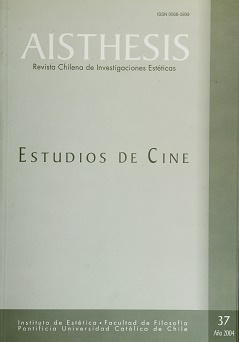Espacio y tiempo en el cine moderno: algunos procedimientos de puesta en escena
Main Article Content
Abstract
The theories that consider editing the basis offilm narrative, tend to disregard that shot, the narrative unit which preserves the unities oftime and space, has also been a formal element offilm narrativefrom the origins ofcinema. Modern cinema, from the writings ofAndré Bazin and the experiences ofRenoir, Welles, and Ophüls, reinstates the sequence shot as a morefaithful representation ofspace and time in reality, as well as a stylistic possibility which eschews the rhetorical procedures ofediting. Another ofthe stylistic procedures of contemporary cinema is the systematic use of 'off-screen space ' with a narrative intention. Both spaces —the seen and the unseen— interact either to withhold information temporarily, to créate a specific tensión, or to elide the obvious or expectedresponse. Both procedures, the 'off-screen shot 'sequence and the use ofspace in "off" have beenfavoured innovatively by some ofthe most prominent contemporary producers.
Downloads
Article Details

This work is licensed under a Creative Commons Attribution-NonCommercial-ShareAlike 4.0 International License.
All contents of this electronic edition are distributed under the Creative Commons license of "Attribución-shareAlike 4.0 Internacional" (CC-BY-SA). Any total or partial reproduction of the material must mention its origin.
The rights of academic works published in this publication belong to their authors., who grant to AISTHESIS: Revista Chilena de Investigaciones Estéticas the license for its use. The management of the permits and the authorization of the publication of the images (or of any material) that contains copyright and its consequent rights of reproduction in this publication is the sole responsibility of the authors of the articles
